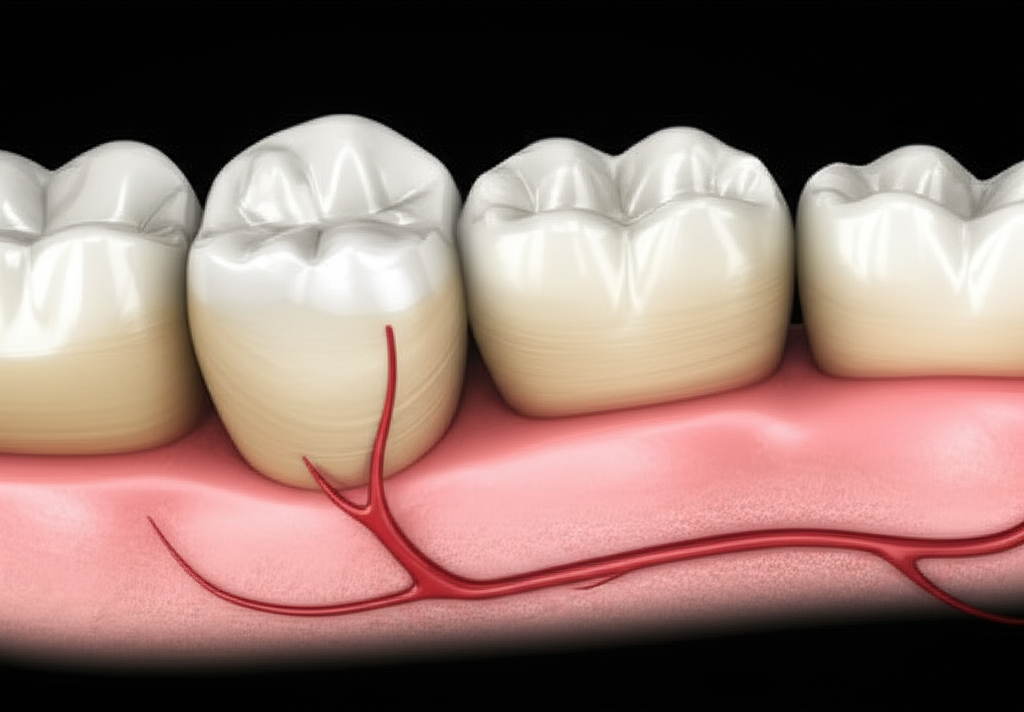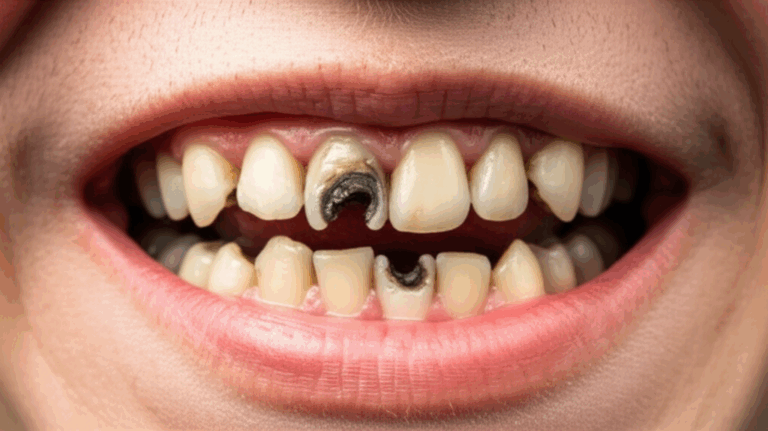
Can an MRI Detect Dental Problems? Understanding MRI’s Role in Oral Health
When I first started learning about dental pictures, I thought X-rays were used for everything. But when I looked into harder dental problems—those weird jaw aches, stubborn bumps, or odd nerve pain—I saw just how important an MRI could be. If, like me, you’ve ever thought, can an MRI show dental problems? or you’re choosing between tests your dentist suggested, you’re in the right spot.
I want to take you through what I wish someone had clearly told me—what MRI can (and can’t) actually do for your teeth and jaw. We’ll break down the science in easy words, so you know when it makes sense, when it doesn’t, and why your dentist might want you to have one.
Table of Contents
- The Main Job of MRI in Dental Imaging
- What Dental Problems Can an MRI Show?
- Jaw Joint (TMJ) Problems
- Soft Tissue Problems
- Nerve Stuff
- Bone Marrow Problems
- Before and After Surgery Pictures
- What Dental Problems MRI Cannot Really Show
- MRI vs. Other Dental Imaging Tests
- When Would Your Dentist Want an MRI?
- Getting Ready For a Dental MRI
- Wrap-Up: MRI as a Special Tool in Dentistry
The Main Job of MRI in Dental Imaging
Let’s start with the basics. MRI, or magnetic resonance imaging, uses a super strong magnet and radio waves to make detailed photos inside your body. What surprised me is that, unlike X-rays and CT scans, MRI doesn’t use any dangerous radiation. That’s nice if you’re worried about getting exposed.
But where MRI is really good is with soft tissues—muscles, nerves, ligaments, even the little pad in your jaw joint. If you picture your jaw not as a simple hinge but as a puzzle of parts working together, you see why sometimes you need more than just a bone picture.
What’s good about MRI:
- Excellent at showing soft tissues (like nerves, pads, glands)
- No radiation
- Can spot swelling and changes before you see them on X-rays or CT
What’s not so good:
- Not very good at showing bone details or what’s inside a tooth
- The pictures can get mixed up (“artifacts”) if you have metal dental fillings, braces, or implants
- Not the first test you usually get—it’s for tricky, hard-to-find problems
From what I’ve seen, most people will never need a dental MRI. But for certain cases, it honestly changes everything.
What Dental Problems Can an MRI Show?
Some people come to the dentist with jaw pain, swelling, or nerve feelings that don’t go away. If this sounds like you, here’s when MRI is better than the usual tests.
Jaw Joint (TMJ) Problems
Let me tell you—one morning, I woke up and my jaw kept making a weird noise when I ate. X-rays showed nothing, but it still hurt. I found out lots of jaw joint (TMJ) problems can’t be seen on basic X-rays. This is where MRI is most helpful.
MRI can show:
- The cushion (disc) slipping out of place inside your jaw joint
- Swelling or extra fluid in the joint
- Problems with the cartilage, not just the bone
- Muscle pain
Dentists and jaw doctors use MRI as the best test for looking at the TMJ disc and other soft tissues. It’s like watching how your jaw really works.
Soft Tissue Problems
Think about things besides teeth here. Ever had a lump, swelling, or sore in your mouth, cheek, or jaw? Because MRI is good for soft tissues, it can see:
- Cysts and tumors (like lumps in your salivary glands, cancers, or harmless bumps)
- Deep tissue infections or pus pockets that spread further than your tooth (not just the usual tooth root abscess)
- Swelling or stones in the major spit glands like the parotid or submandibular gland
For serious things—like worrying about mouth cancer or planning big jaw surgery—MRI can show where a tumor starts and stops, and if it’s touching nerves or other tissues.
Nerve Stuff
Having a strange shooting pain or tingling in your face is pretty scary. Some people think it’s a tooth, but it’s really a nerve. If you have:
- Pinched, hurt, or tumor-pressed trigeminal or facial nerves
- Mysterious face pain or nerve zaps
MRI can actually “see” nerves, something X-rays and CT can’t do. It’s the best test for looking into nerve injuries (after surgery, accidents) or nerve problems in the jaw.
Bone Marrow Problems
You probably don’t think about bone marrow when your jaw hurts, but it can matter. MRI can spot early infection in the bone (osteomyelitis) or rare bone problems like bone death (osteonecrosis—seen sometimes after cancer treatment), and swelling in the bone (the warning before worse issues). X-rays can miss this until it gets bad.
Before and After Surgery Pictures
If you or someone you love is having surgery for a tumor, cyst, or deep infection, doctors often use MRI to get a clear map:
- How big and where the problem is
- If it’s touching nerves, blood tubes, or muscles
- If there’s deep swelling, infection, or a blood buildup after surgery
MRI helps the doctor see the whole area so they can plan and treat you better.
What Dental Problems MRI Cannot Really Show
If you hope MRI tells you everything about your teeth, sorry—it can’t. It’s just not made for tiny, hard things like teeth. Let’s clear things up.
MRI is not good for:
- Finding most regular cavities or seeing tooth cracks
- Showing small root tip infections or the start of bone loss from gum disease
- Showing tiny details in the tooth socket bone
- Checking how well implants are stuck in the bone (this is extra hard with mouth metal!)
If someone wants you to get an MRI for something like a regular toothache or a possible cavity, ask why. For “sharp pain when I bite,” or “my dentist thinks it’s a cavity,” trust me—dental X-rays or 3D cone beam CT are much better.
Think of MRI as a detective for big, deep, or confusing dental problems—not for the simple stuff.
MRI vs. Other Dental Imaging Tests
Trying to figure out the right scan can be confusing. I felt lost with all the names: X-rays, CBCT, CT, and MRI. Here’s what helped me—keep this easy chart for your next dental talk:
| Test | What It’s Good At | Downsides |
|---|---|---|
| Dental X-Rays (bitewing, full mouth) | Cavities, routine bone loss, root problems | Misses early infections or soft-tissue stuff; uses low radiation |
| Cone Beam CT (CBCT) | 3D bone images: jaw break, tumors, implant checks, stuck teeth, sinus details | More radiation than X-rays, less than medical CT; not great for soft tissue |
| MRI | Jaw joint disc, nerves, soft tissue growth/infections | Bad for tooth and bone details; can cost more; blurry with mouth metal |
Want more about these? Check out info on dental diseases or see how dental care matters for overall health.
When is MRI the Best Choice?
From what I’ve seen, MRI is best if:
- You or your dentist think there’s a jaw joint (TMJ) disc problem
- You have weird or lasting face pain (that doesn’t make sense on X-ray)
- You need a check for a jaw/mouth tumor, cyst, or deep infection
- *Worry about nerve damage after injury or oral surgery
- Radiation is a real concern (like if you’re pregnant)
MRI is for special, tough cases—not an everyday kind of scan.
When Would Your Dentist Want an MRI?
I was shocked to learn how specific the reasons are for getting a dental MRI. Usually, your dentist or specialist is trying to solve a very specific puzzle.
Here’s when you might need an MRI:
- Jaw pain, noise, or being unable to open your mouth (and X-rays haven’t helped)
- Worried about nerve injury—if you’re numb, tingly, or have sharp pain not coming from a tooth
- A lump or odd swelling in your cheek, jaw, or mouth (if it’s growing or hard to figure out)
- Infections that go past just one tooth (like if your face is swollen, you can’t open your mouth, or you have a locked jaw)
- Planning big jaw surgery or looking carefully at mouth cancers
For regular cavities, small abscesses, or checkups, MRI won’t be the first thing.
Getting Ready For a Dental MRI
My first MRI felt like getting into a spaceship. The magnets are really strong. They’ll ask if you have metal in your body—like crowns, fillings, braces, or even body jewelry. Most fillings are okay, but always double-check.
What to do:
- Don’t wear metal: No jewelry, watches, removable dental pieces, or hair clips
- Tell them about any implants or metal parts in or around your jaw
- Scared of tight spaces? Tell your team—they have “open” machines or can help calm you down
- Contrast dye: Sometimes you’ll get an injection to help see things better. Let them know if you have kidney troubles or allergies.
The scan doesn’t hurt, but it is loud. Bring headphones and ask for music if it helps.
Wrap-Up: MRI as a Special Tool in Dentistry
So, after what I’ve learned, “can an MRI detect dental problems?” The answer is yes—but with a big BUT. MRI is for the dentist or doctor to help with tough cases involving jaw joints, nerves, and soft tissues. It’s not the go-to for regular tooth decay or bone problems and definitely doesn’t replace the basic X-ray for most tooth care.
I’ve seen MRI solve mysteries that had dentists stumped. Still, I trust my dentist and the scan experts to know when it’s really useful. If used the right way, MRI adds to regular dental tests and helps when nothing else can.
If you’re still not sure if you need one, ask your dentist. Find out why they want it. Do you have pain X-rays didn’t explain? Are they worried about your jaw joint, nerves, or something deep?
And if you want to read more about how new technology is changing dental work, check out your local digital dental lab or see what a crown and bridge lab can do for harder fixes.
Most of all—trust yourself, stay curious, and don’t be afraid to ask another dentist for their thoughts. Dental care keeps moving forward, and you deserve clear answers with the best tools for your needs.
Related topics you might find useful:








